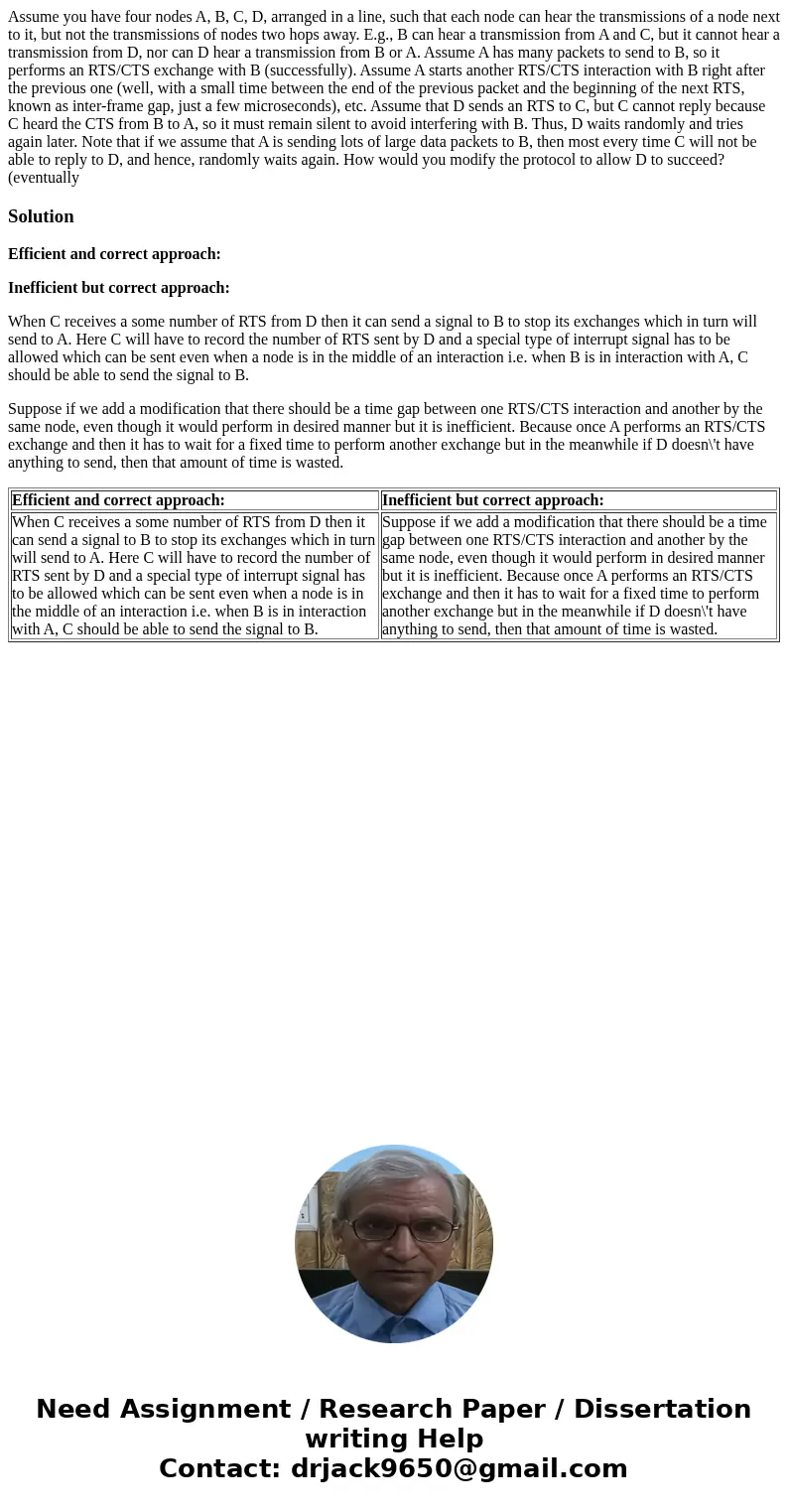Assume you have four nodes A B C D arranged in a line such t
Assume you have four nodes A, B, C, D, arranged in a line, such that each node can hear the transmissions of a node next to it, but not the transmissions of nodes two hops away. E.g., B can hear a transmission from A and C, but it cannot hear a transmission from D, nor can D hear a transmission from B or A. Assume A has many packets to send to B, so it performs an RTS/CTS exchange with B (successfully). Assume A starts another RTS/CTS interaction with B right after the previous one (well, with a small time between the end of the previous packet and the beginning of the next RTS, known as inter-frame gap, just a few microseconds), etc. Assume that D sends an RTS to C, but C cannot reply because C heard the CTS from B to A, so it must remain silent to avoid interfering with B. Thus, D waits randomly and tries again later. Note that if we assume that A is sending lots of large data packets to B, then most every time C will not be able to reply to D, and hence, randomly waits again. How would you modify the protocol to allow D to succeed? (eventually
Solution
Efficient and correct approach:
Inefficient but correct approach:
When C receives a some number of RTS from D then it can send a signal to B to stop its exchanges which in turn will send to A. Here C will have to record the number of RTS sent by D and a special type of interrupt signal has to be allowed which can be sent even when a node is in the middle of an interaction i.e. when B is in interaction with A, C should be able to send the signal to B.
Suppose if we add a modification that there should be a time gap between one RTS/CTS interaction and another by the same node, even though it would perform in desired manner but it is inefficient. Because once A performs an RTS/CTS exchange and then it has to wait for a fixed time to perform another exchange but in the meanwhile if D doesn\'t have anything to send, then that amount of time is wasted.
| Efficient and correct approach: | Inefficient but correct approach: |
| When C receives a some number of RTS from D then it can send a signal to B to stop its exchanges which in turn will send to A. Here C will have to record the number of RTS sent by D and a special type of interrupt signal has to be allowed which can be sent even when a node is in the middle of an interaction i.e. when B is in interaction with A, C should be able to send the signal to B. | Suppose if we add a modification that there should be a time gap between one RTS/CTS interaction and another by the same node, even though it would perform in desired manner but it is inefficient. Because once A performs an RTS/CTS exchange and then it has to wait for a fixed time to perform another exchange but in the meanwhile if D doesn\'t have anything to send, then that amount of time is wasted. |

 Homework Sourse
Homework Sourse